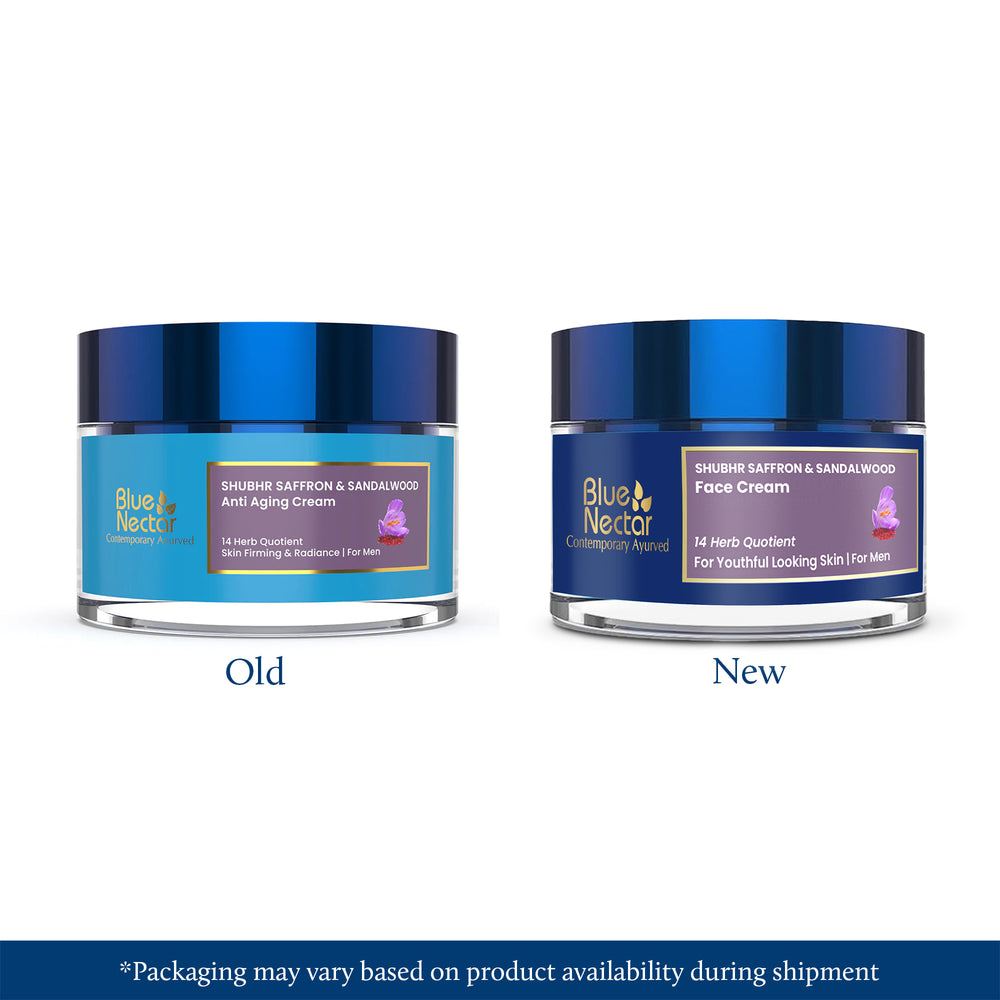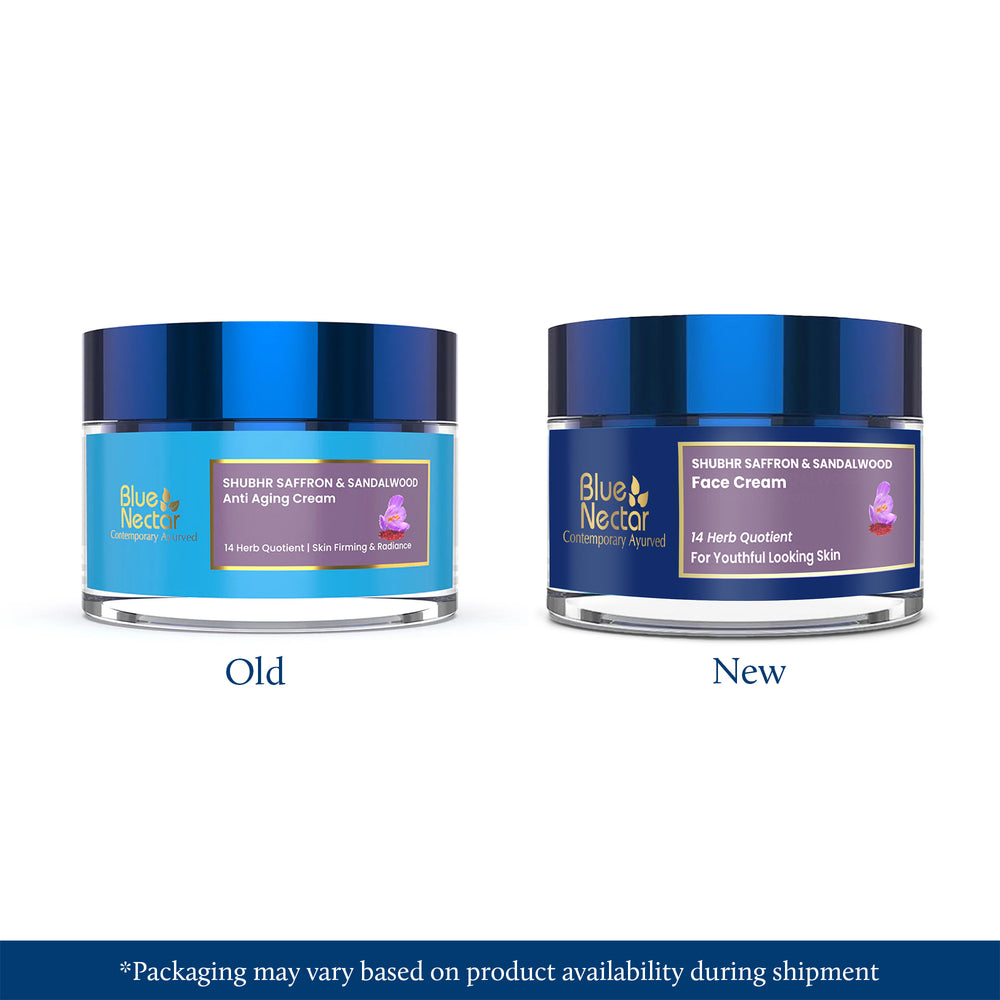How are Ayurveda and Yoga related?
How Ayurveda can enhance your Yoga practice?
| Estimated reading Time - 6 minutes |
Everyone wants to be in great health, but owing to our hectic and fast-paced life, it can be difficult to accomplish the same. People are turning to yoga and Ayurveda to cope with rising anxiety, stress and depression, disordered eating, and a variety of other problems. However, as contemporary women who want to look perfect, we know all you need is yoga and a healthy dose of Kumkumadi face glowing oil every day to make your skin look younger and softer. Kumkumadi face glowing oil helps restore your skin’s natural texture by removing dark spots, scars, blemishes, and wrinkles. The product is 100% Ayurvedic and serves all your skincare purposes in no time.
Coming back to Yoga and Ayurveda, both the terms are making rounds in contemporary society due to their significance in allowing us to live a holistic lifestyle. However, most of us tend to get confused between both terms. This article will clear away all your doubts about Yoga and Ayurveda.
One of the six Vedic philosophical traditions is- Yoga, which is most known for its creation through Patanjali's Yoga Sutras. These are Indian philosophical traditions that recognize the Vedas' authority and attempt to systematize the Vedic doctrines' meaning. Nyaya (Logic), Samkhya (Enumeration of Cosmic Principles), Vaisheshika (Categorization), Uttara Mimamsa and Purva Mimamsa (Ritual) are other Vedanta. Yoga permeates all six disciplines to some degree and symbolizes their practical aspect, laying out the fundamental ideas and methods for cultivating the contemplative mind, which is the foundation of all Vedic wisdom.
Ayurveda is the Vedic philosophy designed primarily for therapeutic purposes in this original Vedic scheme. Besides Ayurveda, there really is no other Vedic healing practice. Yoga is a Vedic spiritual practice system known as sadhana. Yoga is a component of all Vedic sadhanas or spiritual practices.

Ayurveda and Yoga are ancient Vedic sciences that date back to ancient times. Yoga and Ayurveda are sister disciplines that have worked together for hundreds of years to treat the body, mind, and spirit. In general, Ayurveda is concerned with the health of the body, whereas yoga is concerned with the purification of the mind and conscience, but in fact, the two complement and accept one another. The Vedas, which are ancient Sanskrit texts, both describe Ayurveda and yoga.
The initial gurus of the Vedic studies were the historic rishis/Scholars who realized that excellent health is a valuable advantage on the journey to self-realization. And both Ayurveda and yoga are mutually advantageous and provide a variety of methods for preventing and treating various ailments, as well as cleansing and rejuvenating the body. When Ayurveda teachings are combined with Yoga, the therapeutic power of Ayurveda is substantially enhanced. The only full cure is a total confluence of Yoga and Ayurveda.
If we go by the doctrines of the ancient gurus, then it's quite evident that they believed in the power of herbs. Having mentioned that, Kumkumadi face glowing oil is all natural and is made using 28 rare herbs. Filled with the goodness of Ayurveda, Kumkumadi face glowing oil is suitable for all skin types. People with oily skin can apply some amount of Kumkumadi face glowing oil and wash it after an hour while people with dry or normal skin can apply a healthy dose of Kumkumadi face glowing oil and keep it overnight for best results. So, what are you waiting for? Get your pack of Kumkumadi face glowing oil today and see the results yourself. After all, with the arrival of summers, can you even afford to compromise on your skin health? With Kumkumadi face glowing oil, you won’t have to shed sweat for it.
History of Yoga and Ayurveda
Whereas the Vedas are shruti, yogic teachings are smriti in The Bhagavad Gita. The Bhagavad Gita (about 200 BCE) tells stories about Arjuna, a king, and Krishna, his celestial charioteer. Yoga is defined as "balance, feelings, intellect, behaviors, and unselfish deeds," according to the script. Likewise, Patanjali's Yoga Sutra records yogic teachings passed down from gods to yogis through oral traditions. This text occurs between 500 BCE and 400 AD, this text occurs.
Asana is a bodily practice that has been a component of the yoga experience since the 11th century. Hatha yoga poses to bring the nervous system to a state of quiet, laying the groundwork for effective meditation. Modern yoga is based on both ancient texts and the hatha yoga tradition.
Ayurveda, as a comprehensive medicine, developed during the period of the Vedas and is thought to be around 5,000 years old. The Vedas chronicle medical expertise passed down through gods to gurus to physicians and therapists, containing much discussion of herbs and medications. Ayurveda is also discussed in subsequent scripts. Another old medical and surgical literature is the Sushruta Samhita. For recovery, portions of this scientific publication propose exercise and Vedic study. Ayurvedic traditions have existed for a long time and were only presented to the contemporary world in 1970.

Few Similarities Between Yoga and Ayurveda
- Yoga and Ayurveda are both ancient Vedic doctrines. Yoga comes from the Yajur Veda, whereas Ayurveda comes from the Atharva Veda and Rigveda.
- Both realized that maintaining physical health is critical to achieving the four goals of Dharma (duty), Kama (desire), Artha (wealth), and Moksha (Liberation).
- Both acknowledge that focus on health requires an equilibrium of doshas (humors), dhatus (tissues), and malas (waste products).
- Both have a metaphysical anatomical structure that includes 72000 nadis (subtle channels), 7 primary chakras (energy centers), 5 body sheaths, and kundalini shakti (energy).
- Both use bodily cleansing methods that facilitate the evacuation of waste items and poisons through their organic excretion pathways. Yoga utilizes shat karma (Six purification measures), while Ayurveda employs panchakarma (five cleansing activities).
- For uplifting the full being, both suggest using Ayurvedic remedies, asana, pranayama, mindfulness mantra, astrological prayer, puja (worship), and rites.
- Both stress the importance of physical well-being as a basis for mental, moral, and spiritual well-being.
- Both have similar perspectives on psychology. Ayurveda encompasses all six major lines of thought, including Patanjali's Vedanta and yoga sutras. They both recognize that the connection to the body-mind combination is the source of all misery and that the optimum state of health is achieved when we remain in our precise nature, which is utter tranquility, independent of our physical situation.
Significance of Yoga and Ayurveda in Our Lives
One of the most significant difficulties we face is the rise in medical needs and the consequently exorbitant costs. Ayurveda and Yoga practices ensure a pleasant and comprehensive outlook on life. You can acquire a stress-free mind and body, resulting in a longer life.
- The body is detoxified and rejuvenated.
- Yoga and mindfulness meditation practiced on a regular basis might assist to calm the body and mind.
- The most effective stress reliever and anxiety reliever
- Enhances attentiveness while also addressing emotional turmoil.
- It aids in the maintenance of good digestion and boosts the body's metabolism.
- Controls inflammation eliminates aches and pains and helps to maintain joint health.
- Reduces aging and encourages healthy, youthful, beautiful skin. In addition, you can use natural skin care products like Kumkumadi face glowing oil to enhance your skin’s glow in no time.
- Cleanses the body and aids with weight loss.
- Yoga has numerous advantages. Heart health helps to lower blood pressure and cholesterol in the blood.
- Yoga is vital since it develops strength, stability, and flexibility.
- Yoga practice on a regular basis increases energy and improves mood. It also promotes restful sleep and relaxation.
- Yoga and Ayurveda encourage improved self-care. And to add to your self-care regime, you can use Kumkumadi face glowing oil to get healthy skin with a natural glow. So, order your pack of Kumkumadi face glowing oil now!
We know all you need is glowing, supple and soft skin that will maintain your skin health in no time. And as you know, you won’t suggest anything but Kumkumadi face glowing oil. Kumkumadi face glowing oil helps restore your skin’s natural texture by removing dark spots, scars, blemishes and wrinkles. Kumkumadi face glowing oil is 100% Ayurvedic and serves all your skincare purposes in no time.

Conclusion
It is critical to reconcile Yoga and Ayurveda in order to fully realize each's therapeutic and spiritual capacity. Incorporating Ayurveda into Yoga creates a yogic and Vedic medical system that allows all components of Yoga to be used for healing. It offers Yoga-inspired care and prognosis, as well as nutrition and herbal therapeutic interventions that adhere to the spiritual orientation of Yoga. Including Yoga in Ayurveda therapy offers a psychological and spiritual component to the treatment, which would otherwise reduce Ayurveda to a working prototype in which its whole Vedic healing potential would be difficult to actualize.
Ayurveda offers the necessary lifestyle guidelines for Yoga practice, and the necessary foundation to fully realize the therapeutic benefits of all parts of Yoga. Yoga gives Ayurveda and its greater applicability a psychological and spiritual foundation. We need both Yoga and Ayurveda for a completely holistic and psychological approach to treatment and recovery, with Ayurveda delivering the medical framework and Yoga offering the spiritual aim and practices. This is the Vedic system as it was originally devised.
The restoration of Yoga's relationship with Ayurveda is the cornerstone to a full Yoga practice and Yoga medicine for the treatment. This reunification of Yoga and Ayurveda would also lay the groundwork for a genuine discussion with medical advances, tackling not just particular cures but also the root causes of illness and how to sustain society's wellness and health. And as we think of a perfect combination of yoga and Ayurveda, we can’t help but consider adding a generous dose of Kumkumadi face glowing oil to our daily skincare regime. Kumkumadi face glowing oil is 100% Ayurvedic with no chemicals in it and is made using 28 unique herbs. So, if you want a quick fix for your skin health, you can use our natural skin care product Kumkumadi face glowing oil that will restore your skin’s natural texture and enrich it with the essence of Ayurvedic ingredients like Gorochana, Pasupu, Kamala Puvulu, Nelamulaka, Marrimanu, Yestimadhu with Sesame oil. Are you still waiting? Go order your Kumkumadi face glowing oil and enrich your skin with all things natural and Ayurvedic.
Recommended Products by Blue Nectar:
Devtvakadi Pain Relief Oil and Potli Joint and Muscular Pain




















Leave a comment